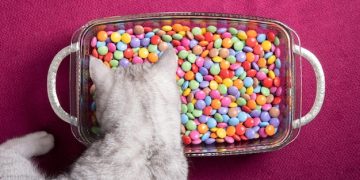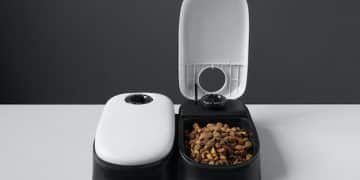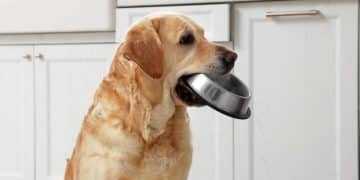Elevated Pet Bowls: Posture and Digestion – Are They Worth It?
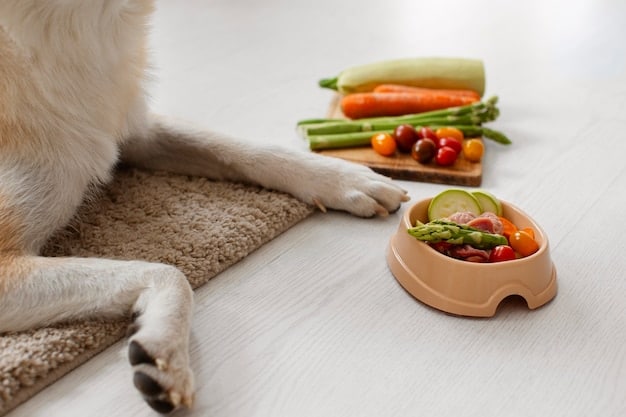
Elevated pet bowls may improve posture and digestion in some pets by reducing strain during meals, but their benefits depend on individual needs and any pre-existing health conditions of the animal.
Are you considering buying an elevated pet bowl for your furry friend? Many pet owners believe that elevated pet bowls can improve posture and digestion, but are they really worth the investment? Let’s dive into a comprehensive review, exploring the potential benefits and drawbacks to help you make an informed decision.
Understanding Elevated Pet Bowls
Elevated pet bowls, also known as raised feeders, are designed to bring the food or water bowl to a more accessible height for your pet. Unlike traditional bowls that sit directly on the floor, these bowls are placed on a stand or platform.
The primary idea behind using elevated bowls is to improve your pet’s posture during meal times. This can be particularly beneficial for older pets or those with mobility issues.
How Elevated Bowls Differ from Traditional Bowls
Traditional pet bowls require pets to bend down to eat or drink, which can strain their neck and joints. Elevated bowls aim to correct this by positioning the food closer to the pet’s mouth, thus reducing the need to hunch over.
- Height: Elevated bowls come in various heights to suit different sized pets, while traditional bowls sit flat on the floor.
- Posture: Elevated bowls promote a more natural eating posture, potentially reducing strain on the neck and spine.
- Cleanliness: Some pet owners find elevated bowls help keep the feeding area cleaner as they can prevent spills and food messes.
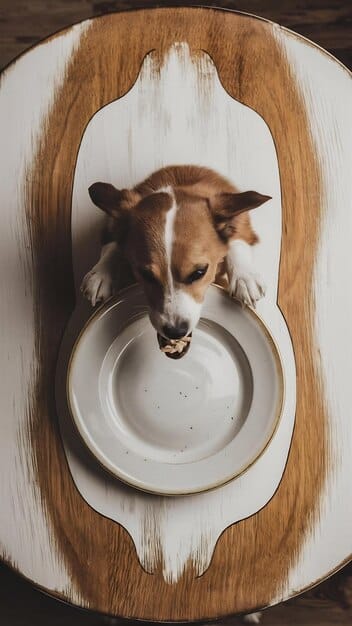
Ultimately, the choice between elevated and traditional bowls depends on your pet’s individual needs and preferences. While some may greatly benefit from the change in posture, others might not require it.
Potential Benefits of Elevated Pet Bowls
The supposed advantages of using elevated pet bowls range from improved digestion to reduced neck strain. These benefits are rooted in the altered posture that these bowls encourage.
While not every pet will experience these benefits, many owners and some veterinarians believe that elevated bowls can make a positive difference in certain situations.
Improved Posture and Reduced Strain
One of the main benefits of elevated pet bowls is the potential for improved posture. When pets eat from floor-level bowls, they often have to strain their necks and backs, which can lead to discomfort over time.
By raising the bowl, pets can keep their spines straighter, reducing the amount of strain on their neck and joints. This is particularly helpful for larger breeds and older pets.
Aiding Digestion: Fact or Fiction?
The claim that elevated bowls aid digestion is a bit more complex. Some proponents argue that a better posture can help food travel more smoothly through the digestive tract. However, scientific evidence supporting this claim is limited.
- Reduced Swallowing Air: Elevated bowls may reduce the amount of air swallowed while eating, leading to less bloating and discomfort.
- Easier on the Esophagus: A more natural posture could potentially ease the passage of food through the esophagus, especially for pets with esophageal issues.
- Veterinarian Insights: While anecdotal evidence suggests digestive benefits, it’s important to consult with a vet to determine if an elevated bowl is right for your pet’s specific digestive needs.
In conclusion, while some anecdotal evidence suggests that elevated pet bowls may support better digestion, more research is needed to corroborate these claims. The primary advantage remains improved posture and reduced strain during meal times.
Addressing the Concerns: Potential Drawbacks
While elevated pet bowls have their advantages, they are not without potential drawbacks. It’s important to consider these concerns before making the switch.
Some studies and veterinary opinions suggest that elevated bowls may not be suitable for all pets, particularly large breeds susceptible to bloat.
The Bloat Controversy
Gastric dilatation-volvulus (GDV), commonly known as bloat, is a life-threatening condition that primarily affects large, deep-chested dog breeds. Some studies have suggested a possible link between elevated feeding and an increased risk of bloat.
However, the research on this topic is not conclusive, and other factors such as genetics, diet, and eating habits also play significant roles.
When Elevated Bowls May Not Be Suitable
Despite the potential benefits, elevated bowls may not be the best choice for all pets. Certain conditions and behaviors might make traditional bowls a better option.
- Pets with Megaesophagus: Animals with megaesophagus—an enlarged esophagus—often require specific feeding positions to prevent regurgitation, and elevated bowls might not be suitable.
- Very Small or Short-Legged Breeds: Some smaller breeds might find elevated bowls too high, making it difficult for them to reach their food comfortably.
- Messy Eaters: If your pet tends to make a mess while eating, an elevated bowl could exacerbate the problem by scattering food further.
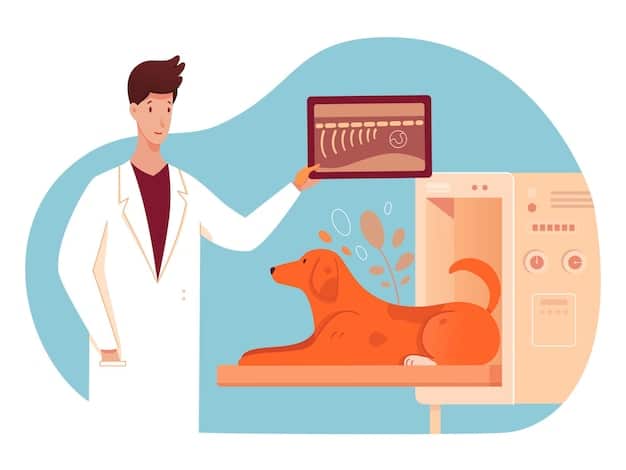
Before making a decision, consult with your veterinarian to determine whether an elevated bowl is appropriate for your pet’s specific health needs and physical condition. They can offer tailored advice based on your pet’s breed, age, and medical history.
Choosing the Right Elevated Pet Bowl
Selecting the right elevated pet bowl involves considering several factors to ensure it meets your pet’s needs and preferences. The height, material, and design all play critical roles.
The goal is to find a bowl that supports optimal posture and is safe and easy to use for both you and your pet.
Height Considerations
The correct height for an elevated pet bowl depends on your pet’s size and build. The ideal height allows your pet to eat with its head and neck in a natural, comfortable position.
Measure your pet from the floor to their chest while they are standing. The top of the bowl should be roughly at chest level to minimize strain.
Material Matters
Elevated pet bowls come in various materials, each with its own pros and cons. Common materials include stainless steel, ceramic, plastic, and wood.
- Stainless Steel: Durable, hygienic, and easy to clean, stainless steel is a popular choice.
- Ceramic: Aesthetically pleasing and sturdy, but can be prone to chipping or breaking.
- Plastic: Lightweight and affordable, but may harbor bacteria and is not as durable as other options. Look for BPA-free plastic.
- Wood: Offers a natural look, but requires sealing to prevent water damage and bacterial growth.
Consider your pet’s chewing habits and any allergies when selecting a material. Opt for non-toxic, food-grade materials to ensure your pet’s safety.
DIY vs. Buying: Exploring Options
When it comes to acquiring an elevated pet bowl, you have two main options: purchasing one from a store or creating your own DIY version. Each approach has its own set of advantages and considerations.
DIY options can be cost-effective and allow for customization, while store-bought bowls offer convenience and guaranteed quality.
Benefits of DIY Elevated Pet Bowls
Creating a DIY elevated pet bowl can be a fun and rewarding project. It allows you to customize the height, material, and design to perfectly suit your pet’s needs.
You can also use recycled materials, making it an eco-friendly option. However, ensure the materials are safe and non-toxic for your pet.
What to Look for in Store-Bought Bowls
If you prefer the convenience of a store-bought bowl, there are several factors to consider. Look for bowls made from high-quality, food-grade materials that are easy to clean.
- Stability: Ensure the base is stable to prevent tipping, especially for larger pets.
- Adjustability: Some elevated bowls come with adjustable heights, allowing you to customize the bowl as your pet grows or if you have multiple pets of different sizes.
- Design: Choose a design that complements your home decor and is easy for your pet to access.
Ultimately, the best choice depends on your budget, DIY skills, and personal preferences. Whether you opt for a DIY project or a store-bought bowl, prioritize your pet’s comfort and safety.
| Key Point | Brief Description |
|---|---|
| 🐾 Improved Posture | Reduces neck and joint strain during meals. |
| 🤔 Digestion Aid? | May reduce air swallowing, but evidence is limited. |
| ⚠️ Bloat Risk | Potential risk for large, deep-chested breeds. |
| 📏 Height Matters | Bowl height should match pet’s chest level. |
Frequently Asked Questions
▼
No, elevated bowls aren’t suitable for all pets. Pets with megaesophagus or certain digestive issues might not benefit. Consult with your vet to determine the best option for your pet’s specific needs.
▼
Measure your pet from the floor to their chest while they’re standing. The top of the bowl should be roughly at chest level, allowing them to eat comfortably without straining their neck.
▼
Some pet owners report improved digestion, but scientific evidence is limited. Elevated bowls may reduce air swallowing, but it’s not a guaranteed solution for digestive issues. Consult your vet.
▼
Yes, there’s a potential risk of bloat in large, deep-chested breeds. However, research is inconclusive, and other factors play a role. Discuss this concern with your veterinarian for personalized advice.
▼
Stainless steel is a great choice due to its durability and hygiene. Ceramic is aesthetically pleasing but prone to chipping. Plastic is affordable but should be BPA-free. Always prioritize non-toxic, food-grade materials.
Conclusion
In summary, while elevated pet bowls can offer benefits such as improved posture and reduced strain for some pets, they may not be suitable for all. Consider your pet’s individual needs, breed, and any pre-existing health conditions before making a decision. Consulting with your veterinarian can provide personalized advice to ensure the best choice for your furry companion.

